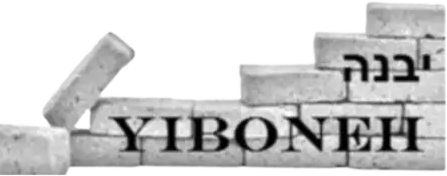LINKS TO VALUABLE RESOURCES

The King in the Field
Author: Rabbi Menachem M. Schneerson from the Sichos Collection Link to the Resource: CHABAD.ORG Media Type: TextThe Significance of Rosh Chodesh and the Month of Elul
Author: Rabbi Michael Rosenswig Link to the Resource: TORAHWEB.ORG Media Type: Text
Elul and the Thirteen Attributes of Mercy
Author: Sarah Yehudit Schneider Link to the Resource: ASTILLSMALLVOICE.ORG Media Type: Text
Mercy Month
Author: Adapted from the works of Rabbi Schneur Zalman of Liadi Link to the Resource: CHABAD.ORG Media Type: Text
Thought for Ellul
Author: Rabbi Lord Jonathan Sacks Link to the Resource: RABBISACKS.ORG Media Type: TextTeshuva: Obligation and Opportunity
Author: Rabbi Aharon Lichtenstein Link to the Resource: ETZION.ORG.IL Media Type: Text
Elul: Hashem is Rooting for Us
Author: Rabbi Yitzchak Breitowitz Link to the Resource: YIBONEH.COM Media Type: Video
The Secret of the Month of Elul
Author: Rabbi Yisroel Glick Link to the Resource: CHABAD.ORG Media Type: Video
What is Elul All About
Author: Rabbi Aharon Pessin Link to the Resource: DROPSOFLIGHT.COM Media Type: Video
Chizuk for Elul and Yomim Naraim
Author: Rabbi Akiva Tatz Link to the Resource: TORAHANYTIME.COM Media Type: Video
Chodesh Elul
Author: Rabbi Asher Weiss Shlit"a Link to the Resource: MINCHASASHER.COM Media Type: Video
The Month of Elul - The Process of Repair After the Destruction
Author: Rabbi Yinon Kalazan Link to the Resource: HARAVYINONKALAZAN.COM Media Type: Video
Hitting the Reset Button
Author: Rabbi Dovid Roberts Link to the Resource: TORAHANYTIME.COM Media Type: Video
Selichot – Balancing Ahavah and Yirah
Author: Rabbi Anthony Manning Link to the Resource: RABBIMANNING.COM Media Type: Audio
Was Last Year’s Neilah Rejected? Rav Kook and Our Elul Davening
Author: Rabbi Mordechai Torczyner Link to the Resource: YUTORAH.ORG Media Type: Audio
Elul Night of Inspiration - Remembering the Goal
Author: Rabbi Moshe Weinberger Link to the Resource: YUTORAH.ORG Media Type: Audio
